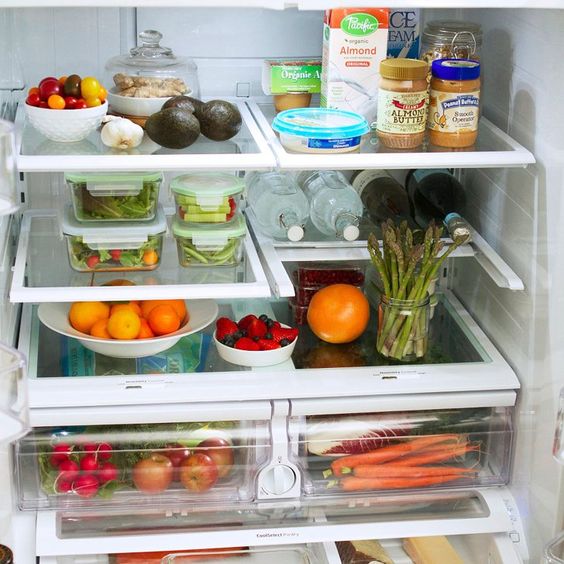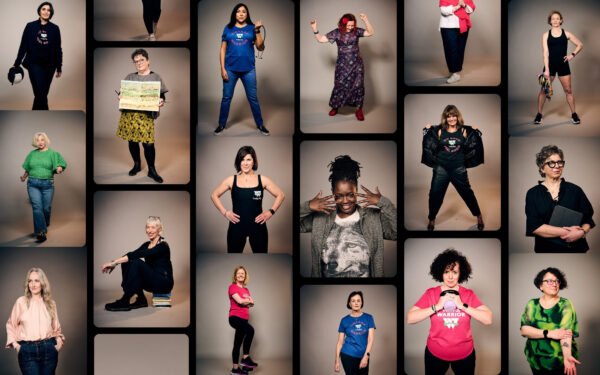
5 False Friends in Your Kitchen
5 false friends in your kitchen
It’s easy to think you are reaching for a healthy choice, when in fact it may be making you even hungrier!
Many healthy snacks might leave you feeling full and happy – you are making a good choice after all. However, that temporary energy boost can leave you feeling hungrier in the long term. How? We’ve asked our experts on tips how to stop sabotaging your diet and get clued up!
1. Green Juices
The most obvious healthy choice is a green juice or smoothie – green means healthy, right?! Unfortunately, shop bought smoothies are full of fructose, which means when you’re over that sugar high you’ll be even hungrier than before. Why? Shona Wilkinson, nutritionist at SuperfoodUK.com, explains:
“Shop-bought fruit smoothies can seem like a healthy choice – fruit is good for us, right? But a single serving bottle of fruit smoothie can easily contain 25 grams of sugar or more – that’s 5 to 6 teaspoons! Therefore, these drinks are not a great idea especially when trying to shed a few extra pounds.”
“Try making your own smoothie at home with 100g of berries, quarter of a large avocado (or half a small one), a small handful of spinach and topped up with unsweetened almond milk. As well as containing less sugar, it will fill you up for longer and make you less likely to want to snack on sweet foods later in the day”
If you want to make sure you’re still getting in all your daily greens, you can always add a powder to your smoothie. Nutritionist, Cassandra Barns explains:
“Adding in a teaspoon of a super greens mixture to your water or juice can help keep hunger at bay. It’s a great way to boost your nutritional intake with greens such as spirulina, chlorella and barley or wheat grass. These superfoods contain fibre, helping you to feel fuller for longer as well as many energy-giving nutrients such as B vitamins to help you get through the day. Try the new Natures Plus Ultra Juice Green Powder (£21.95, www.revital.co.uk)”
2. Cereal or Granola Bars
One of the easiest snacks to keep in your bag, ready for when you’re feeling a little peckish, are cereal or granola bars.
Shona says:
“They sound so healthy – surely cereal is good for you? Yes cereal itself may be fine – especially if its wholegrain. But many cereal bars contain a great deal of refined sugar and worse – sugar syrups, such as glucose and high fructose corn syrup. These types of sugar syrups travel through our bodies very quickly and are potentially damaging on a cellular level – which isn’t good for immune system and skin for example. Fruit added to cereal bars is often pre-coated in sweet syrups so that just loads on more sugar.”
A great alternative to cereal bars are almonds, which will keep you fuller for longer and are just as easy to keep in your handbag.
Lily Soutter, nutritionist and weight loss expert at www.lilysoutternutrition.com, explains:
“Almonds are often avoided due to their high calorie content, however numerous studies have shown that they can actually help us to lose weight. Those who consume a handful of almonds a day, tend to lose more weight in comparison to those who have none. Their high protein and healthy fat content are responsible for keeping us fuller for longer, leading to a lower overall calorie consumption throughout the day.”
3. Muesli
The traditional picture of a healthy morning often includes a bowl of muesli, but often the high sugar content can leave you feeling hungry well before lunch.
Dr Marilyn Glenville, the UK’s leading nutritionist and author of ‘Natural Alternatives to Sugar’ says:
“Muesli conjures up a picture of a healthy breakfast and is often accompanied in adverts in a beautiful alpine setting with trees, bright blue skies, clear lakes and clean air. But not all muesli’s are the same, and as with anything you buy you need to read the label and not just go by the hype on the front of the packet. Many can be laden with high amounts of added sugar and salt and this can turn a healthy breakfast into an unhealthy one.”
4. Sushi
Sushi is one of the easiest lunches to buy, but it’s also one that won’t keep you full for long. Shona explains:
“Sushi is often the healthy lunch alternative to a sandwich. But is it really? The amount of protein and vegetables you actually get in sushi is often very tiny (if not minuscule) in comparison to the amount of white rice in each serving. Some outlets do have brown rice sushi which would be better but that is still a higher serving of starchy carbohydrates to vegetables and protein. It would be healthier to have a fist sized portion of protein alongside half a dinning plates worth of vegetables and a brown rice portion that fits into an espresso coffee mug.”
5. Low Fat Yoghurt
While yoghurts are promoted as a healthy snack, the sugar crash you will inevitably have you reaching for more food.
Marilyn says:
“The label might say ‘low fat fruit yogurt’ and so you would think it would help with controlling your weight, but the yogurt can contain up to 8 teaspoons of added refined sugar. Often sugar is the next ingredient after milk in highest amounts in the yogurt. This type of yogurt will be a high GI food, causing your body to release more insulin to deal with the quick rise in blood sugar (blood glucose) and insulin is your fat storing hormone of the body.”


















































